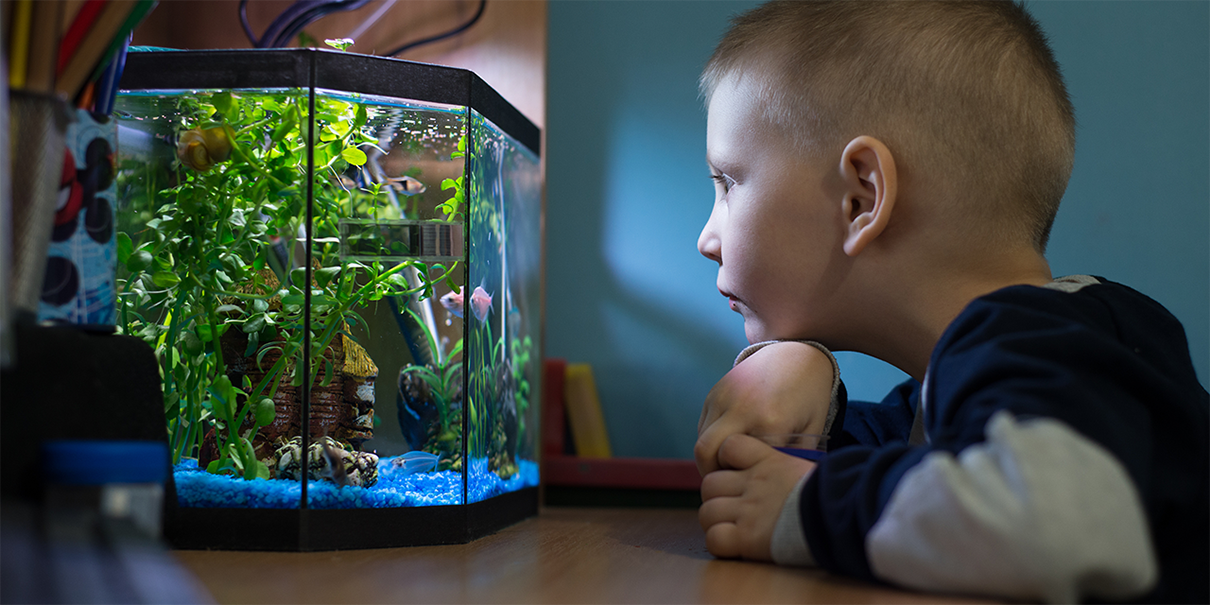
Preparing For The Introduction Of Your New Fish
Care
General Advice
Fish
01/05/2023
It’s a very exciting time adding a fish tank to the family home or office. The team at Pet.co.nz will help you set up your fish and become a successful fish keeper.
Here are a few of the things you will need to get started...
-
Fish aquarium - getting the right size for your requirements is the first step
A lot of aquariums come with fish tank light fixtures and fish tank filters included. These are generally the best way to go if you are just getting started -
Fish tank gravel, ornaments, fish tank backgrounds and plastic plant decorations
-
Gravel syphons
-
Fish tank plant fertilizers and substrates
-
Plants
-
Filter and light hood (if your tank doesn't already come with one)
-
Water conditioner
-
Bacterial additives to get the biological cycle up and running
-
Fish tank test kit
-
Fish tank net
-
Cleaning kit - sponge, fish tank scrapers, extendable scrubber
-
Timer and multi-plug to plug everything in with
-
Fish Food - a variety is best to ensure a good balanced diet for your fish
Optional - but highly recommended: -
UV Sterilizer
-
Co2 Diffuser
Positioning your tank in the right place
Try to place your fish tank in a place that has a constant temperature, and one that is not in direct sunlight. This will help you to maintain a consistent environment.
Setting up your aquarium
- Keeping in mind that 1 litre of water weighs 1kg it’s worth taking time to properly set up your aquarium. If you have a 50 litre tank it is going to weigh 50kgs, so it's essential to double check the stand and make sure that it is going to be strong enough. Larger aquariums can weigh over 200kg so also check the floor is strong enough and level as any discrepancies can cause a twist in your tank.
- Once placed in the correct position, wash out the gravel thoroughly, you don’t want to have any dust in the gravel transferred into your aquarium. Also place all of your fish tank ornaments and rocks to make sure you are happy with the look of your aquarium.
- Place all of your accessories like aquarium heaters, UV Sterilizers and aquarium thermometers in the correct place - this is much easier to do without water in the tank. DON’T TURN THEM ON until you have water in the tank.
- Place the aquarium gravel along with any substrates into the fish tank, then pour water into the tank. Pour directly onto the back of a flat plate to make sure that the pouring the water into the tank does not disrupt the gravel.
- Once the tank is full you can get the aquarium filter going and turn on all of the tanks, lights etc.
At this stage you can start adding in water clarifiers and bacteria supplements to help get the tanks water suitable for fish.
What products to use before you add the fish
It’s important that you use two types of products to get your tank cycling to enable your fish to enter healthy water.
- A good aquarium water conditioner which takes any chlorine and other chemicals out of the water that can hurt your fish. Most of these products also add a layer of protective slime onto your fish to help protect them. So always put this into the aquarium any time you add in new fish.
- Good bacteria, these are products that will give your tank a boost of biological bacteria that is designed to help breakdown the waste, leftover food and any other nasty’s in your tank. Click here for a list of the Bacteria supplements available.
These need to be put into the tank before you add fish. It takes at least three - five days to get a tanks water settled. All of these products will help you settle the tank and have clear guides on the bottle to ensure that you use the correct amounts. You should also use them any time you add fish or do a water change to help give the tank a boost after it comes under a little more stress from either the new water or adding in extra fish.
How many fish should I have?
There are a few variables on how many fish you can have in a tank, one is the actual size of the fish when you get them and also the size of the fish when they are fully grown.
Here are some tips on stocking your tank:
Always err on the side of caution. You are much better to find that you don’t have enough fish as you can always add them, if you have too many fish you may find that some of your fish get sick or die due to having too much waste in your tank. This waste puts pressure on your aquarium filtration, which can cause your filters to overload and become unable to remove or breakdown the waste.
Always slowly build up your community of fish. It’s better to take your time to build up your community so that it doesn't put too much stress on your filtration. Even in a large tank start with just a few fish as this helps to start your biological filtration by feeding it some waste.
Here is a guide of how many fish you should have in your tank.
| Tank Litres | Goldfish to start with | Goldfish approx 5-7cm | Small Tropical Fish to start with approx 3-5cm | Tropical Fish approx 5-7cm once fully stocked |
|---|---|---|---|---|
| 20 | 2 | 2 to 3 | 2 to 3 | 4 to 6 |
| 40 | 2 | 4 to 6 | 4 to 6 | 10 to 12 |
| 60 | 3 | 6 to 8 | 6 | 14 to 16 |
| 80 | 3 | 8 to 10 | 6 | 18 to 20 |
| 100 | 4 | 10 to 12 | 8 | 22 to 24 |
| 120 | 4 | 12 to 14 | 8 | 26 to 28 |
| 140 | 5 | 14 to 16 | 10 | 30 to 32 |
| 160 | 5 | 16 to 18 | 10 | 34 to 36 |
| 180 | 6 | 18 to 20 | 12 | 38 to 40 |
| 200 | 6 | 20 to 22 | 12 | 42 to 44 |
